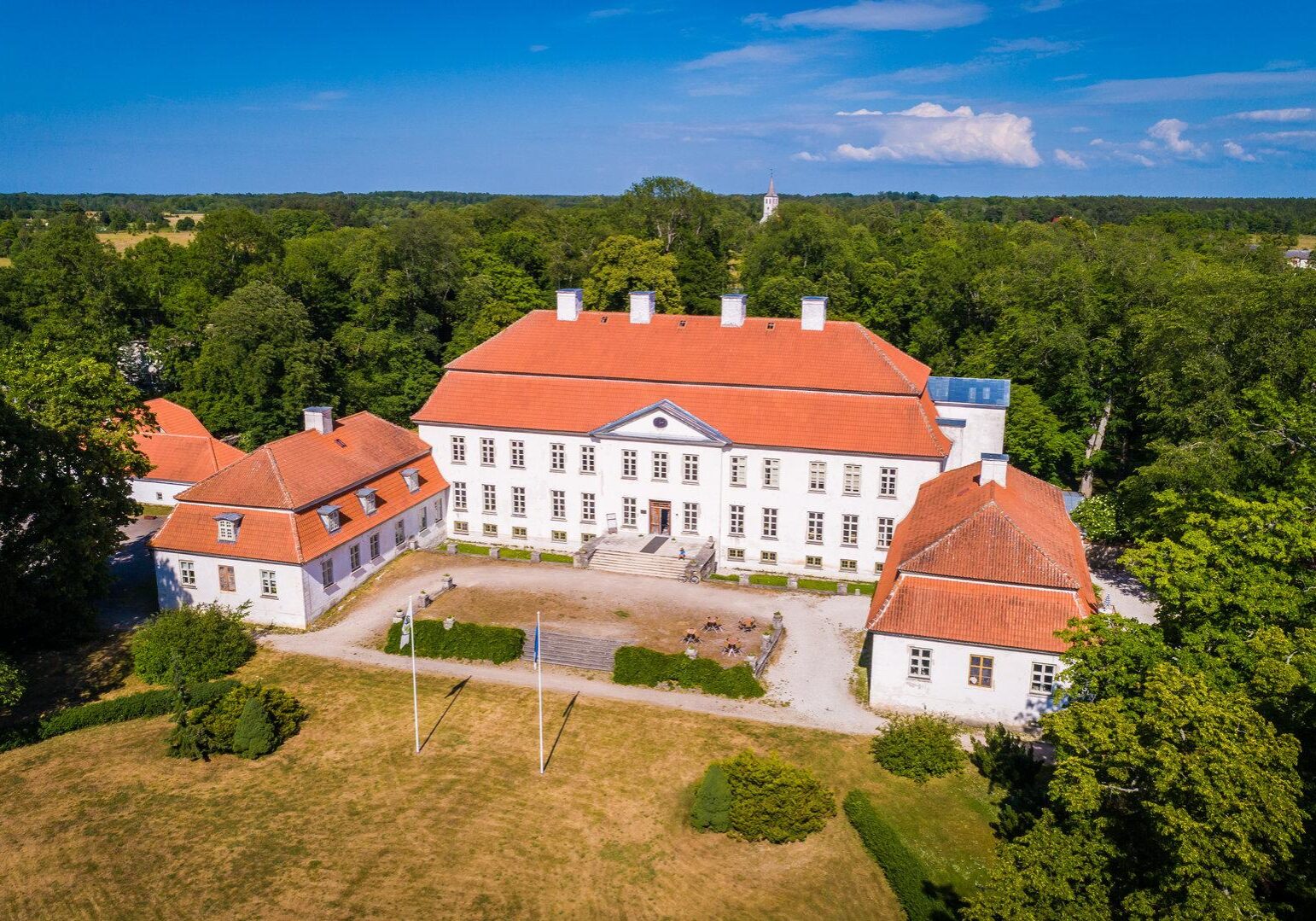Following the manors

One long period of Estonian history, about 600-700 years, can be summed up by the word manor age. About 30 manors are known from this period in Hiiumaa, including church and pastoral manors. Manorial officials and landlords, mostly Baltic Germans, had a significant influence on local life through their ownership of large estates and the peasants who lived on them. The manorial system encouraged and caused injustice, including economic coercion and social inequality. On the other hand, the estates also brought us much that was new from the wider world, be it new working methods, plant varieties, recipes or developments in school and church life.
At the beginning of the 20th century, the time of the former manors was over. During the time of the Republic of Estonia (1918-1940), there were still a few functioning manors and estates leased to previous owners, but the manor life of the old days was no more. It was then that this long-lasting economic and political system of sorts finally fell apart. The manor’s buildings and land were taken over by new owners, be they former estate workers, farmers, companies or the state. Many large and magnificent buildings fell into disrepair for lack of the right owner and money.
The route includes the following stops:
See other routes
Hiiumaa can be explored in many ways: by walking around with a backpack on, by driving through important places with a guide, or by setting up and discovering routes yourself with the help of maps, guidebooks and internet information. The lighthouse journey is one option.
Where did you get such a name-lighthouse tour? This is another update of an old idea.
1990. Douglas Wells, a peace corpsman from far away Nebraska, volunteered in Hiiumaa. He has even written a book about his life in Estonia called “The Adventures of the Yankee in Hiiumaa”. One of the things with which he left his mark on Hiiumaa was the marked and labelled objects and the accompanying book with explanations. All this was intended for tourists arriving by car on the island, which had been freed from the border zone. New and modern information boards have now arrived, but the book still remains. Slight changes have been made to the objects that will be presented – but the idea itself has also remained the same. This means that the lighthouses, with their beams of light, act as guides and signposts for discovering the island of Hiiumaa.
The Hiiu-Kärdla quarry was founded in 1829. by the Ungern-Sternberg brothers. By 1830, a large and magnificent woolen cloth factory had been built in Kärdla. The company changed and grew over time, but above all, the industrial company changed Kärdla. Over the years, the small Swedish village became a well-kept workers’ settlement – the forerunner of today’s small town. The factory was destroyed during World War II in the autumn of 1941. However, there are still clear traces of the factory era in the square and throughout Kärdla. This is evidenced by the network of streets created during this period and the modern workers’ houses built with the help of the factory. Although the company is known to have been started in Suuremõisa, the Ungern-Sternberg brothers’ main manor house, we recommend starting the journey in Kärdla at Vabriku Square, where the transforming company was located. If you wish, you can enter the former factory directors’ residence (Pikk Maja), where the SA Hiiumaa Museum is located. There you can see a model of the factory.
With its peninsulas, Hiiumaa clearly stretches towards the main cardinal points. To the north lies the Tahkuna Peninsula, with its beautiful nature and rugged history. There, you too can move around the former Siberian-Swedish territories, exploring the 20th century. traces of the wars of the 19th century, visit the small Orthodox chapel and cemetery and climb to the top of the highest lighthouse in Hiiumaa. There can be other surprises by the sea and in the forests. Stay awake!
How, what, who or what rituals people believe in has changed over time. Worshipping of protective heather trees, land mothers and spring spirits began in Hiiumaa in the 13th century. All this took time, and so it is still possible to go to the sacred trees (Tärkma oak and Ülendi lime). Of the Christian churches on the island, you can see large parish churches (such as Pühalepa, dating from the 13th century), auxiliary churches or chapels (such as Kassari), Orthodox churches (such as Kuriste), as well as houses of worship of the Brethren, Baptists or Pentecostals. In addition to these, pastorates (such as Reigi), cemeteries (such as Kuri) and parsonages (such as Käina) are closely linked to religious life. This is all worth exploring.
